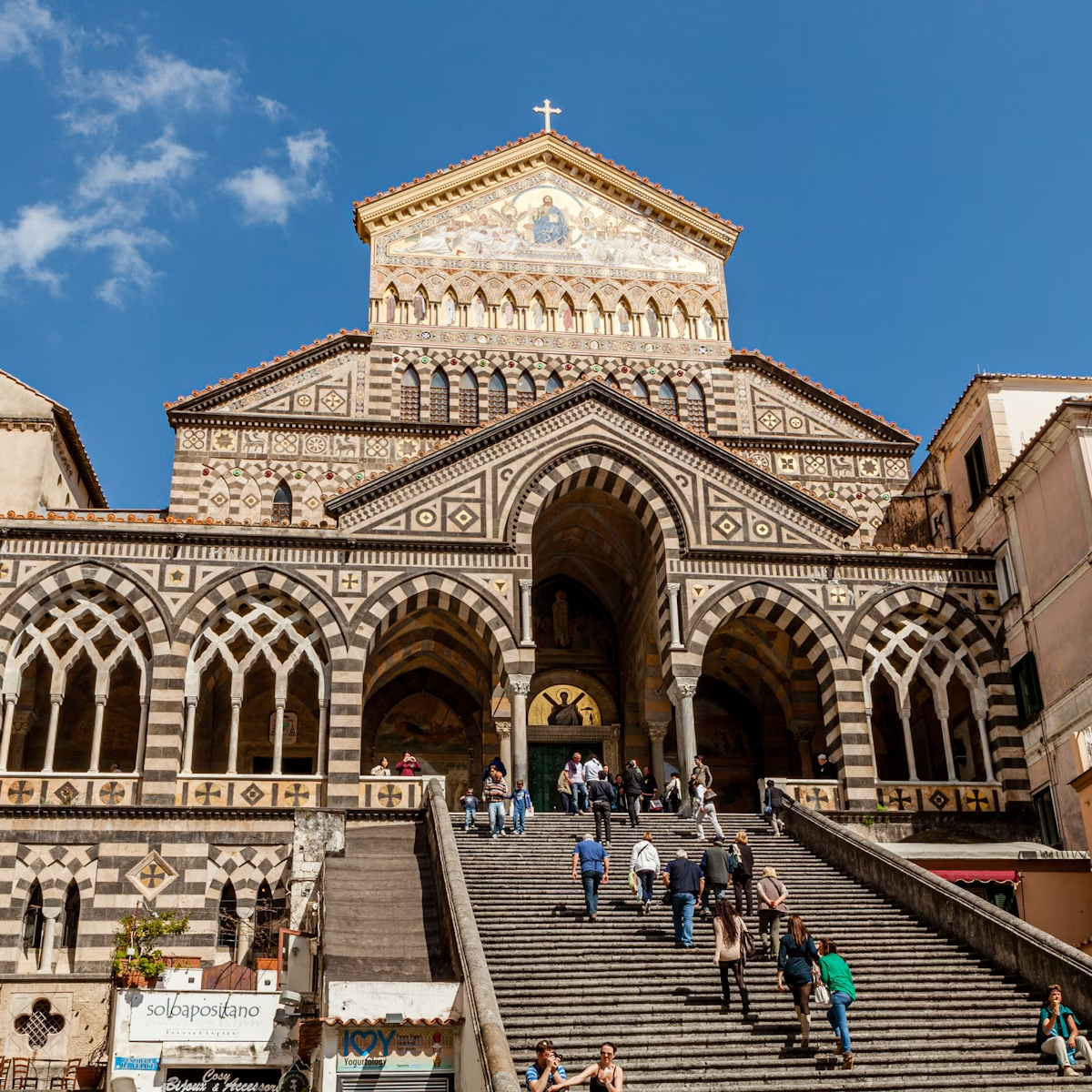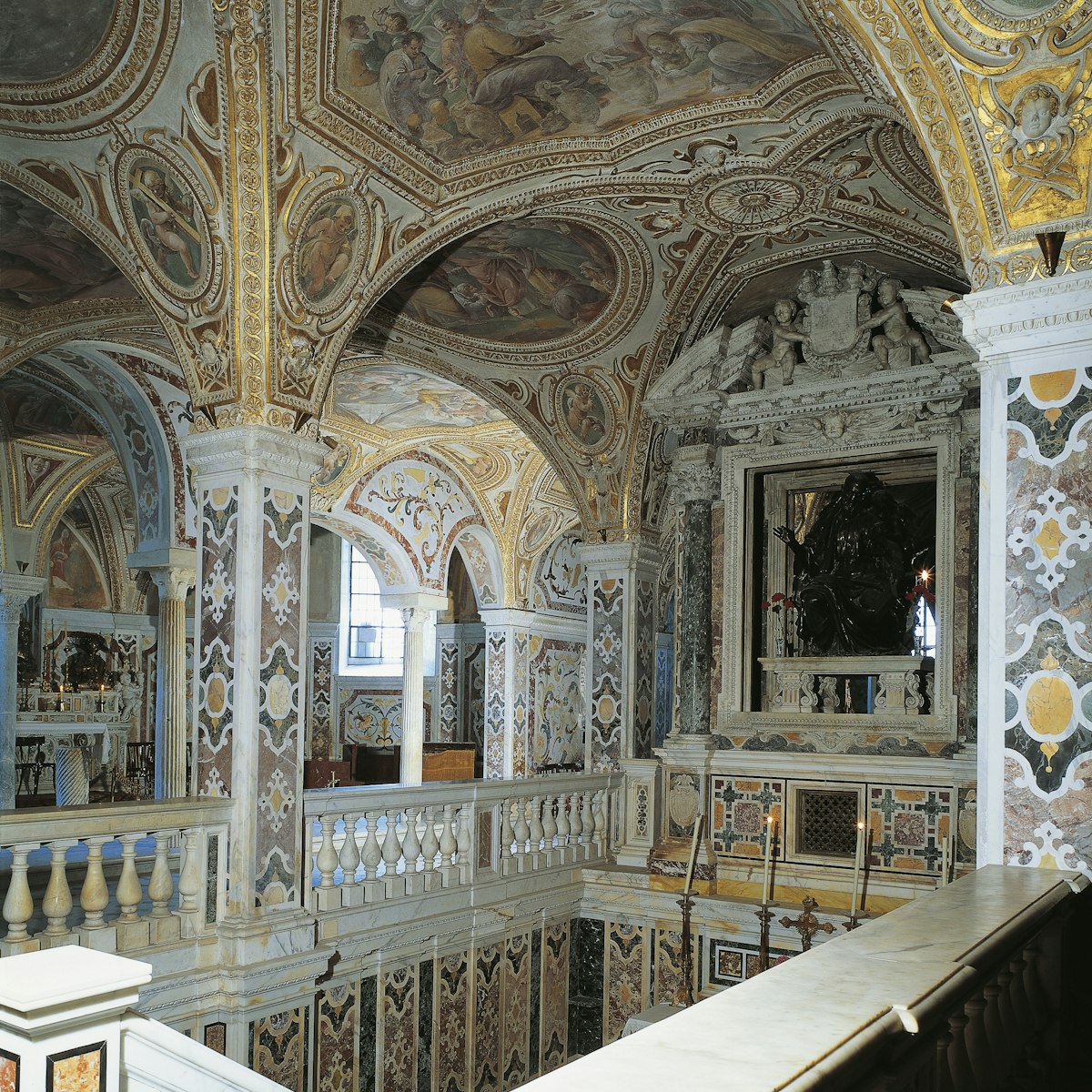Facing the east side of the ruins, the Museo di Paestum houses a collection of much-weathered metopes (bas-relief friezes). Among these are originals from the Tempio di Argiva Hera (Temple of Argive Hera), 9km north of Paestum, of which virtually nothing else remains. The most famous of the museum's numerous frescoes is the 5th-century-BC Tomba del tuffatore (Tomb of the Diver), thought to represent the passage from life to death with its frescoed depiction of a diver in mid-air.
The fresco was discovered in 1968 inside the lid of the tomb of a young man, alongside his drinking cup and oil flasks, which he would perhaps have used to oil himself for wrestling matches. Rare for the period in that it shows a human form, the fresco expresses pure delight in physicality, its freshness and grace eternally arresting. Below the diver, a symposium of men repose languidly on low couches and brandish drinking cups.




